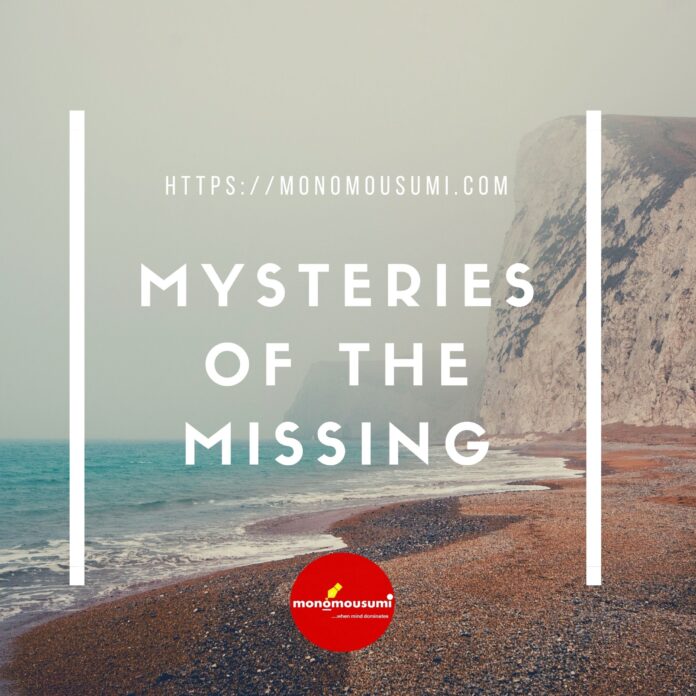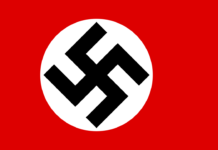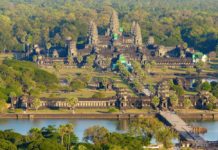H.P Craft once said, “The oldest and strongest emotion of mankind is fear, and the oldest and strongest kind of fear is fear of the unknown”, so when faced with unprecedented events, human mind always tries to rationalize things that happen out of blue, to fill in the gaps of the unknown, even at the cost of sensationalism sometimes. And that gives rise to a plethora of conspiracy theories, ranging from a specific geographical mystery, sudden deaths, to viruses, it is everywhere. Rarely backed by the reality of the situation and often aided by the imagination, nonetheless in the pursuit of sense. There have been cases when indeed a conspiracy theory came out to be true, such as “Operation Berkshire”, when tobacco companies hid the fact that smoking can lead to cases of cancer. The indisputable research was done in the 1950s, but it wasn’t until the 1990s that it became a piece of common public knowledge. Or “Project Sunshine”, more horrific in nature, when it has been said that the U.S government was stealing dead bodies to do radio-active research, to test the measure of nuclear fallout in the human body in the wake of Hiroshima and Nagasaki. Turns out that they indeed were using body parts of deceased children, because they wanted young tissue, without the permission of grieving families. It took half a century to see the light of public discourse.
Our country India does have its fair share of mysteries that is yet to be resolved, from abandoned temples, cursed immortality of a mythological character to unresolved deaths. We went through the loss of many illustrious leaders through assassinations. But one death, that to this day seeks the attention is the death of Lal Bahadur Shastri, second Prime Minister of independent India. The conspiracy theories find its ground on the fact that his death took place on the 11th of January 1966, one day after signing a peace treaty to end the 1965 Indo-Pakistan War in Tashkent, Uzbekistan ( then the Soviet Union). The death of a leader of a sovereign nation, in a foreign land, that too after signing a peace treaty sparked lots of speculation of foul play.
Exactly after thirteen days since the death of Shastri, as the country was mourning its leader’s loss, something else of equal unfortunate nature took place.24 January 1966, around 7:02 am, Air India flight 101 to Vienna crashed into Mont Blanc in the Alps, killing 106 passengers and 11 crew members. One of whom boarded the plane was Homi Jahangir Bhabha, also known as the “ Father of the Indian Nuclear Programme” who was on his way to attend the International Atomic Energy Agency conference. The pilot of the plane has ensured and checked that everything was alright and as per schedule, but minutes later the plane crashed.
Dr. Bhabha was a man of notable stature, an Indian nuclear physicist, founding director, and professor of physics at the Tata Institute of Fundamental Research (TIFR).Founding director of the Atomic Energy Establishment, Trombay (AEET) which is now named the Bhabha Atomic Research Centre in his honor. A Padma Bhushan and a multiple Noble prize nominee. Although the crash has been attributed to miscommunication between the aircraft and Geneva airport, the tragedy has been followed by lots of speculation, because the strong forces of the world at that had much to gain from the demise of this stalwart of science.
Homi Bhabha studied in Cambridge but came back to India when world war 2 started. He stayed back after the war and joined the Nobel Laureate C.V. Raman’s laboratory, Indian Institute of Science, and went on to become the founder-director of the Tata Institute of Fundamental Research in Bombay. Over time, he became a strong advocate of India emerging as a Nuclear Power, and its way of progress could only be secured when India could defend itself, while supported by then Prime Minister of the country, Mr. Jawaharlal Nehru. In 1956, while giving an interview to All India Radio, Bhabha emphasized that given permission,India could make a nuclear bomb in 18 months. Three months after the fateful interview, his plane crashed. Which brings the crash under the radar of unanswered questions. Was the accident mere negligence on someone’s part? Or was it a thoroughly planned to stop a country from achieving its nuclear efficiency by killing its pioneer, at the prime of his career.
It has been pointed out time and again that the American intelligence was behind the crash, reasons were given that the geopolitical stakes that it had. To establish its supremacy, no one, but the United States needed to have a monopoly over nuclear power. But as subsequently the Soviet Union acquired nuclear technology, followed by China, who tested A-Bomb. The American presence was already fleeting in Asia and that was a threat to them and their allies. Also, the non-alignment policy that India had during the cold war earned the dislike of the American government. It wasn’t until 1962, after the sino-Indo war that Dr. Bhabha has openly called for developments in nuclear power, supported by Mr. Lal Bahadur Shastri in 1964-65.
What further establishes the mystery of Dr. Bhabha’s death is years before the fateful plane crash In 1950, another Air India aircraft, the ‘Malabar Princess’, had also crashed into Mont Blanc and all 48 on board were killed. In 2017, Daniel Roche, a Swiss climber, found remains of an aircraft in the Alps, which could be from either of the two Air India crashes. Roche, an aviation enthusiast, had found a few limbs, as well as a jet engine at the site. He believes that Air India Flight 101 was intercepted by another plane and crashed.
Roche had said, “If Kanchenjunga had crashed in the mountain, there should have been a huge fire and explosion as there were 41,000 tonnes of fuel in the aircraft, but that was not the case. According to me, it collided with an Italian aircraft and as there is very little oxygen at that height, there was no combustion that could cause an explosion.” The reason for this conclusion was there was little debri and no indicator of head-on collision with the glacier. But an eventual French inquiry report dismissed any doubts of interception but reiterated that the crash was the result of miscalculation. That would have cleared many unanswered questions but that’s not what happened, In 2008, an alleged conversation between CIA officer Robert Crowley and journalist Gregory Douglas was published in the book Conversations with the Crow which led people to believe that the American intelligence agency had a hand in the Air India crash and Homi Bhabha’s demise. The CIA official was quoted as saying, “We had trouble, you know, with India back in the ’60s when they got uppity and started work on an atomic bomb.” Referring to Homi Bhabha, the CIA official said, “That one was dangerous, believe me. He had an unfortunate accident. He was flying to Vienna to stir up more trouble when his Boeing 707 had a bomb go off in the cargo hold.”
All added together, it does seem like the death Of Dr. Bhabha wasn’t a mere accident but it has much more then what it seems to the naked eye. We’ve seen in the recent past many unfortunate and sudden deaths of our nuclear scientists, the death of Lokanathan Mahalingam, or the death of BARC scientist Uma Rao or K.K Josh and Abish Shivam,working on INS Arihant, India’s first indigenous nuclear ballistic submarine. They have been poisoned and found dead on railway tracks. As much as it is about our curiosity towards their mysterious deaths. It is also about the pursuit of truth because it is very unfortunate for a country to lose the torchbearers of science that could’ve taken the scientific endeavors to new heights, set new goals, and guided the country forward. It’d be ironic for us to boast about our nuclear efficiency as a state but turn a blind eye to the deaths of our Nuclear scientists.
Time has passed, but it is yet to be seen that if the mystery ever gets unraveled.
By Antara Purkayastha, Kailashahar, Tripua, India
















